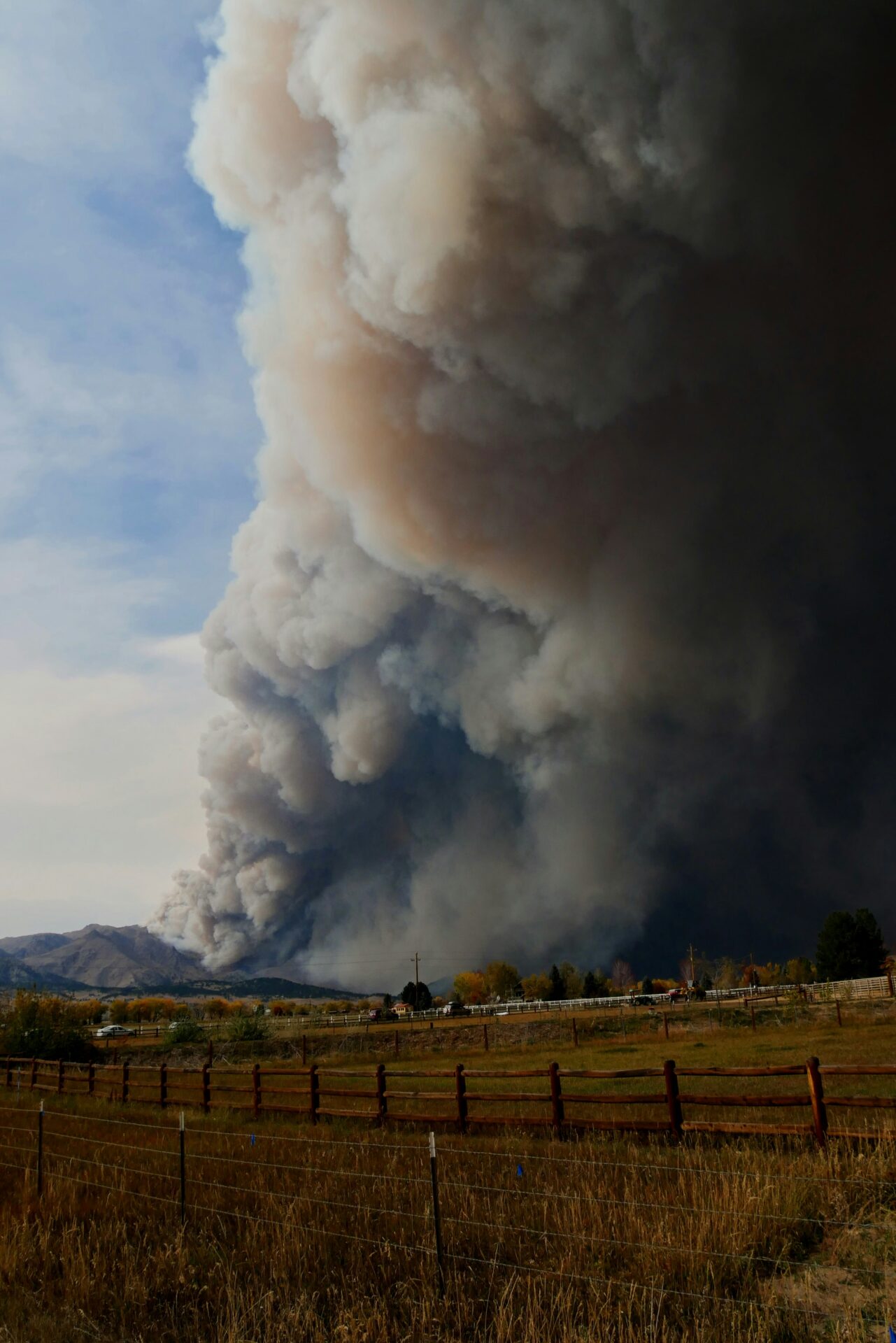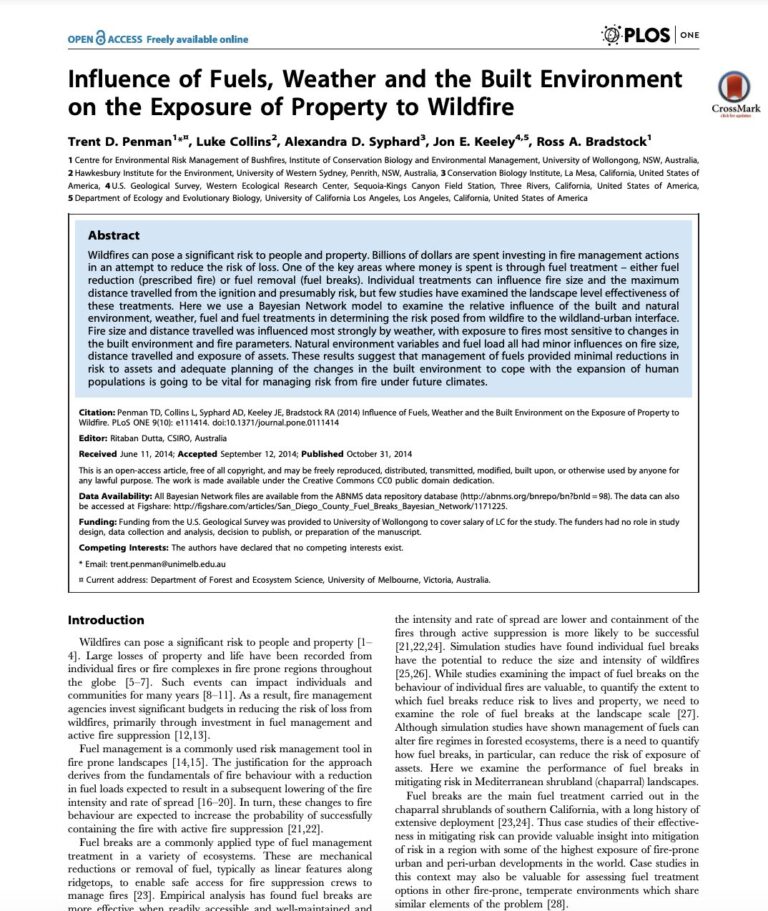Wildfires can pose a significant risk to people and property. Billions of dollars are spent investing in fire management actions in an attempt to reduce the risk of loss. One of the key areas where money is spent is through fuel treatment – either fuel reduction (prescribed fire) or fuel removal (fuel breaks). Individual treatments can influence fire size and the maximum distance travelled from the ignition and presumably risk, but few studies have examined the landscape level effectiveness of these treatments. Here we use a Bayesian Network model to examine the relative influence of the built and natural environment, weather, fuel and fuel treatments in determining the risk posed from wildfire to the wildland-urban interface. Fire size and distance travelled was influenced most strongly by weather, with exposure to fires most sensitive to changes in the built environment and fire parameters. Natural environment variables and fuel load all had minor influences on fire size, distance travelled and exposure of assets. These results suggest that management of fuels provided minimal reductions in risk to assets and adequate planning of the changes in the built environment to cope with the expansion of human populations is going to be vital for managing risk from fire under future climates.
Influence of Fuels, Weather and the Built Environment on the Exposure of Property to Wildfire


